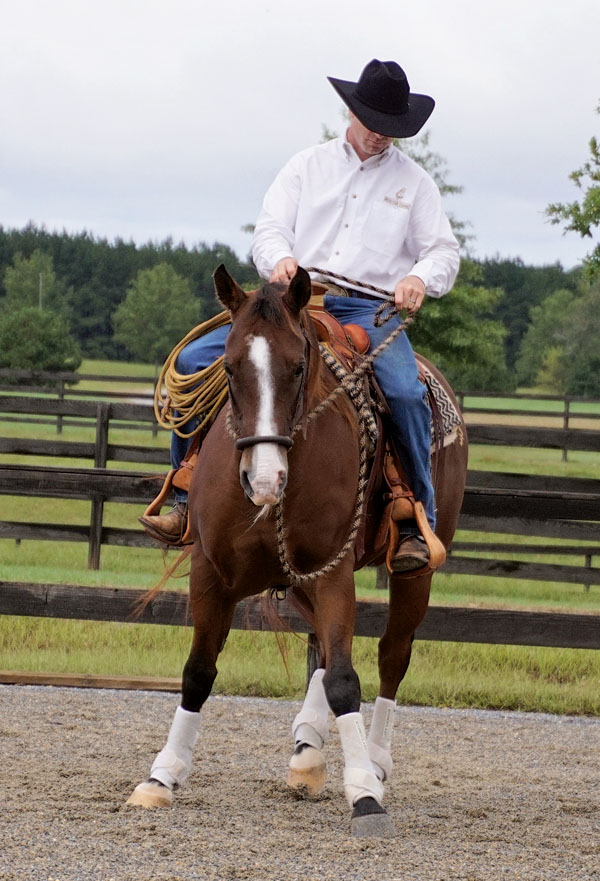I want to help you get better control of your horse’s shoulders. Being able to easily move your horse’s front end gives you a better command of his overall movement. Amateurs tend to get a lot of help that focuses on controlling the head and neck or the hind end, and though those are important goals, they’re not the whole story. Expert riders have mastery over their horse’s shoulders to achieve the results they want. Amateurs tend to rely too much on their reins, instead.

With this exercise, you’ll begin to cultivate that shoulder control, by learning to bring your horse’s shoulders in just a step or two at a walk on a circle. I call it the swing drill, and it creates a foundation from which you can begin to build full control of your horse’s front end.
Why you need this. If you can move your horse’s shoulders independent of the rest of his body, you’ve got a powerful tool. With it, you can fix an ill-shaped circle, initiate a correct turn, avoid knocking over a barrel, and achieve many other formerly elusive goals in your riding. Plus, this tool makes it much harder for your horse to act up with you, because you’re in better control of all his feet.
Before you begin. Make sure your horse is ready to listen and respond. Warm him up thoroughly, then work him enough to get any edge off so he can relax, settle in, and be responsive to your cues. Groundwork in advance and/or plenty of work at a steady trot will get him primed to perform well.
How to ‘swing.’ Begin by walking your horse on a circle to the left. Timing is important; you need to give the cues I’ll describe just as your horse is bringing his inside front leg forward. Go ahead and look down if need be to determine when that is. Then, at that moment, ask your horse to bring his shoulders just slightly inside the circle using three cues simultaneously: (1) pressure from your right foot just in front of the cinch; (2) light neck-rein pressure from the right rein; and (3) light, direct pressure on the left rein until you can just see the corner of your horse’s left eye. As I’m doing in the photo, you can open your left rein a little, plus “open the door” with your left leg by keeping it slightly away from your horse’s side.
When he responds. As soon as your horse gives you one step to the inside of the circle, as my horse is doing, release all cues and resume walking a normal circle (you don’t want him to spin). Then ask for another swing step to the inside, keeping it casual. Do this about 10 times, then reverse all cues to ask for a swing step 10 times in the opposite direction. With repetition over time, this drill will begin to give you the shoulder control you need for confident horsemanship and best performance.
Taylor McIntosh, a horse trainer and clinician from Waverly, Alabama, has studied under Al Dunning, Buck Brannaman, Brad Barkemeyer, Clinton Anderson, and others. His passion is helping horses and people, which he does through lessons and training/colt-starting, and in two-day clinics presented throughout the Southeast (mcintoshequine.com).




